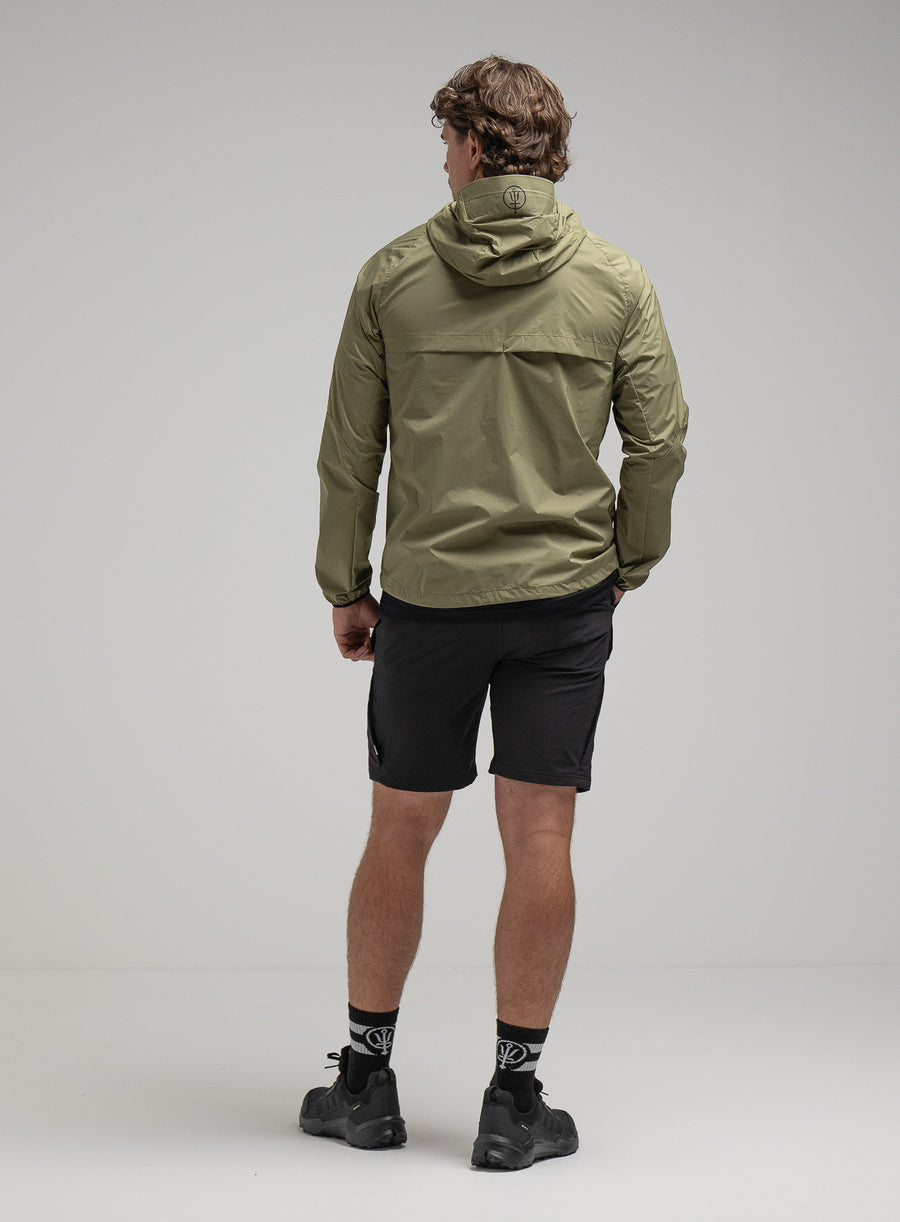The ability to stay dry in extreme environments can be the difference between life and death whilst on operations. The human body loses heat twenty times faster when wet compared to when dry, making it imperative that you have the right kit for whatever mission you face.
ThruDark’s water-proof and water-resistant jackets make for a flexible armoury that can be deployed in a range of wet conditions and scenarios.
The difference between ‘water-proof’ and ‘water-resistant’


TERMS OF ENGAGEMENT
‘Water-resistant’
Water-resistant means a garment treated with water repellant coating, known as DWR (‘Durable Water Repellant’). This will prevent water absorption and cause droplets to bead on the jacket’s outer fabric for a limited time. Water resistant jackets will not have their internal seams taped.
The pinnacle of DWR performance is a C8 DWR, reserved exclusively for military contracts. ThruDark specifically selects a C6 DWR - it’s durable and effective and it’s the next best technology we can get our hands on.
The Engage Jackets is one example of our water-resistant jackets that use C6 DWR.



"If you know the enemy and know yourself, your victory will not stand in doubt; if you know Heaven and know Earth, you may make your victory complete."
The Art of War
Terms of engagement
‘Water-proof’
Water-proof jackets will usually feature either a waterproof membrane and/or DWR coating and will normally have internal seams taped for added protection. These generally offer greater protection than water-resistant jackets and are rated by what is termed ‘hydrostatic head’.
To measure the hydrostatic head of a fabric, a column of water is pressed against it. The height of the column is increased until the water penetrates the fabric. The term ‘hydrostatic head’ is used to denote the amount of water pressure required to penetrate the fabric and is normally given in mm. UK manufacturers are allowed to claim a fabric is water-proof if the hydrostatic head is 1,500mm but most waterproof jackets measure around 10,000mm to 30,000mm. In short, the higher the hydrostatic head, the greater the water-proofing.
ThruDark’s current range of water-proof jackets include the lightweight Skirmish Jacket (20,000mm) and the more heavy duty Raid Jacket and Scout Smock (which measure 10,000mm).


GET THE LOOK
SHOP WATER RESISTANT


ITHAX JACKET
Men's black packable hooded synthetic insulated jacket
$599 AUD
‘Even Submarines Sink’ - What To Expect From Your Waterproof Jacket
A waterproof jacket will not keep you dry indefinitely in torrential conditions, even submarines sink. Simply put, if you are out in the rain for too long, you will experience some water ingress.
Why is this?
The answer lies in another key consideration of product design - breathability. To prevent wetting out from sweat during dynamic pursuits, your layers need to be breathable.
Such design considerations dictate an inevitable balancing act between water-resistance and breathability. Wearing a bin bag in the rain would keep the water out but you would soon wet out from sweat in such a membrane as it would not be breathable. The moment you work with a waterproof fabric, adding seams, stitches, zips and vents, it will lose a degree of waterproofing at the gain of shape, fit and breathability. This is an inevitable cost of the design process, with the eventual goal being a jacket that balances both waterproofing and breathability.
TERMS OF ENGAGEMENT
'Breathability'
The reverse side of the coin when discussing water-resistant and water-proof jackets. If you are going to be engaging in dynamic exercises when on operations, you don’t want to sweat it and wet out your jacket by doing so.
The breathability of a jacket is measured in g/m2 and you will often find jackets in the range of 5,000g/m2 (low breathability) to upwards of 20,000g/m2 (high breathability).


TERMS OF ENGAGEMENT
'Jacket Layers'
A ‘2 layer’ jacket will have an outer fabric bonded to the waterproof fabric with a liner to protect the membrane - this liner is generally not bonded to the others. These jackets will typically favour flexion and comfort at the cost of breathability and waterproofing - with these jackets often being cheaper as well. A ‘2.5’ layer jacket will have an outer fabric bonded to the waterproof fabric and a partially bonded liner. Again, this will be lighter than a 3 layer jacket but won’t be as breathable or waterproof. A ‘3 layer’ jacket has all three of these layers bonded together. The waterproof membrane is fully bonded between the outer and inner layers making it more durable. These jackets are that bit heavier and will often cost more than 2 and 2.5 layer jackets, however they will genuinely offer the best protection.


ThruDark’s Use Of Smart Fabric Optimises Waterproofing and Breathability
eVent fabrics led the way on Direct Venting technology which not only repels rainwater but enhances sweat permeation away from the body during times of high activity. This Direct Venting membrane contains billions of microscopic pores that work to instantly vent internal vapour buildup when you exercise. Not only this but eVent’s smart fabric is a Dry System, meaning that it does not need to get wet in order to activate its enhanced properties.















